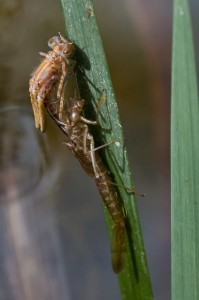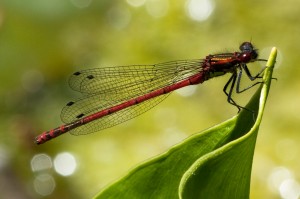Every year I learn more and more about the natural world surrounding me. I find that for every creature that I learn to identify there are at least a dozen more waiting for me.
One of the advantages of working in my current location is that I can quickly get to the riverside and look for wildlife. In the sunny days of early May (which, looking at the grey sky seem a long time ago) I went looking for the first butterflies of the year. I saw a few, but they were disturbingly small in number. However, I did come across this fly which I had never noticed before and which is apparently fairly common and widespread.
Meet the alder fly (sialis lutaria):
Not very exciting you might think, and you would probably be right – the Wildlife Trust site describes them as sluggish and apparently dead alder flies are used as fishing bait. However, I have never noticed them before even though they were everywhere on the day I went for a walk. And, look at the detail in the wings. How can you fail to be impressed by that! Apparently, they have no connection with Alder other than being found near the edge of water (where the female lays about 200 eggs) which is where Alder is commonly found. Being sluggish they spend most of their time near the water where they hatched and where they live as carnivorous larvae for a couple of years before pupating into these adults. In case you are interested they are about 2 cm in length and there are several varieties which require expert identification to differentiate them.


